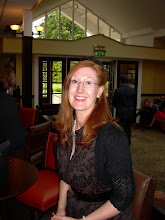 Last night I saw Wuthering Heights at Birmingham Rep . Adapted by April de Angelis, it demonstrated the hallmarks of her innovation and style. I must confess I had been rather dubious beforehand; the translation of an epic book like Wuthering Heights into a stage play is no small task, and one that's difficult to do well, especially given the audience expectations that are likely to go with it! To reduce Wuthering Heights, a substantial novel, to a 2 hour 20 minutes play is no mean feat, and with such a complicated plot as well it does mean that it's rather the bare bones of the plot, but given the difficulties it was well done, and the set was well-adapted for the scene changes. The moors are ever present, projected in the background, which worked very well, bringing the wildness of the scenery into the houses.
Last night I saw Wuthering Heights at Birmingham Rep . Adapted by April de Angelis, it demonstrated the hallmarks of her innovation and style. I must confess I had been rather dubious beforehand; the translation of an epic book like Wuthering Heights into a stage play is no small task, and one that's difficult to do well, especially given the audience expectations that are likely to go with it! To reduce Wuthering Heights, a substantial novel, to a 2 hour 20 minutes play is no mean feat, and with such a complicated plot as well it does mean that it's rather the bare bones of the plot, but given the difficulties it was well done, and the set was well-adapted for the scene changes. The moors are ever present, projected in the background, which worked very well, bringing the wildness of the scenery into the houses.Susannah York as Nelly Dean absolutely stole the show, as far as I'm concerned - as both narrator of the tale, and participant in events, she really comes to the fore in this production. Amanda Ryan was a good Cathy, though - she certainly looked the part, and had the right mixture of passion, joie de vivre and despair, playing her deathbed scenes in a manner reminiscent of Ophelia (an appropriate comparison on several levels, I think). I was a little dubious about Anthony Byrne as Heathcliff, though - of course, so much is invested in the part by those who know the book, but somehow he seemed more a bit cross than deep and angry, and his maltreatment of Isabella Linton just seemed a little unconvincing - as though he has a good heart, really.
Given that Birmingham has been taken over by the Conservative party conference, I was disappointed not to see David Cameron there, checking out the true nature of our present Prime Minister...How could Gordon Brown have compared himself to Heathcliff? I assume he hasn't read the book, and thinks it means he is a deep man of few words...not an uneducated, wife-beating, sadistic, misanthropic man.

























